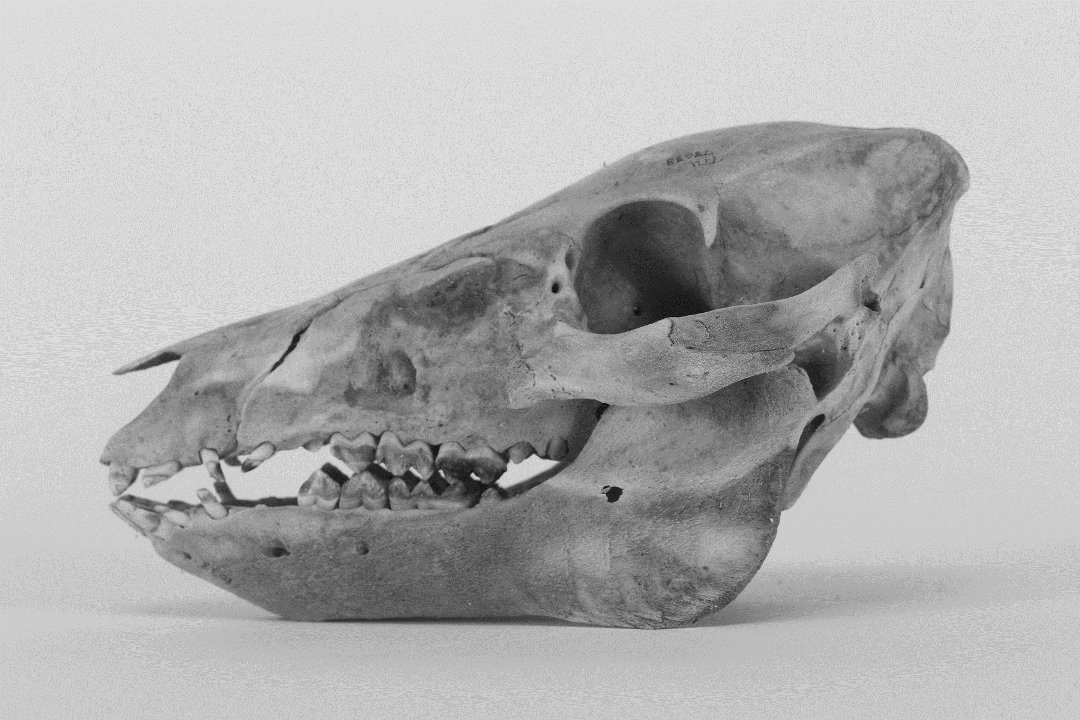FERAL HOG*
Sus scrofa Linnaeus 1758
Order Artiodactyla : Family Suidae
The European wild hog was domesticated by humans approximately 8,000 years ago. Races of this species have remained as a game species in much of their original range (Europe, Asia, North Africa, Sumatra, and Java), and the species was first introduced into the United States in the late 1800s and early 1900s. The wild hog's domestic counterpart also has worldwide distribution, and in areas where suitable habitat is available, free-ranging animals often become feral. Feral hogs have been present in the United States since the first settlers brought them to Florida in 1539.
Pure European wild hogs have several distinguishing characteristics that set them apart from domestic or feral hogs. Among these are brown to blackish-brown color, grizzled guard hairs, a mane of hair (8–16 cm long) running laterally from the neck to the rump, a straight, heavily tufted tail, and ears covered with hair.

Characteristics of feral hogs are varied, depending upon the breed of the ancestral stock. When liberated together, European wild hogs and feral hogs interbreed readily, with the traits of European wild hogs apparently being more dominant.
There is a sizeable population of feral hogs, European wild hogs, and European hog × feral hog hybrids in Texas, with estimates of over 2 million animals that live in nearly every county in the state. These animals have become so prevalent that for all practical purposes they should be considered as a member of the natural fauna. For that reason, we have included a complete account of their natural history in the section on Artiodactyla (see p. 316).
Wild hogs can have detectable influences on wildlife and plant communities as well as domestic crops and livestock. Extensive disturbance of vegetation and soil occurs as a result of their rooting habits. The disturbed area may cause a shift in plant succession on the immediate site. Wild hogs also compete, to some degree, with several species of native wildlife for certain foods, particularly mast.
From The Mammals of Texas, Seventh Edition by David J. Schmidly and Robert D. Bradley, copyright © 1994, 2004, 2016. Courtesy of the University of Texas Press.
Natural Science Research Laboratory
-
Address
Museum of Texas Tech University, 3301 4th street, Lubbock, TX 79409 -
Phone
806.742.2486 -
Email
nsrl.museum@ttu.edu

